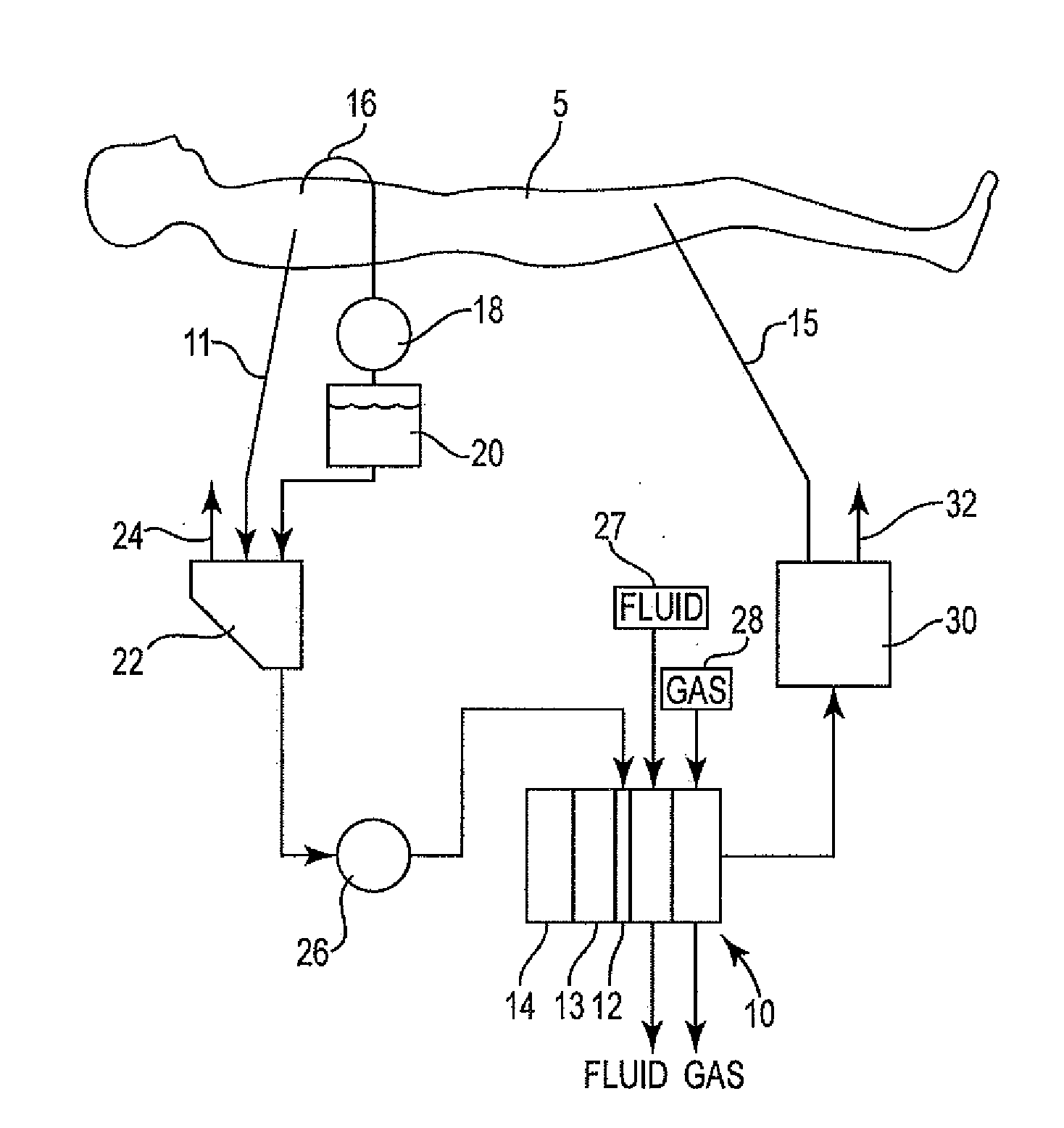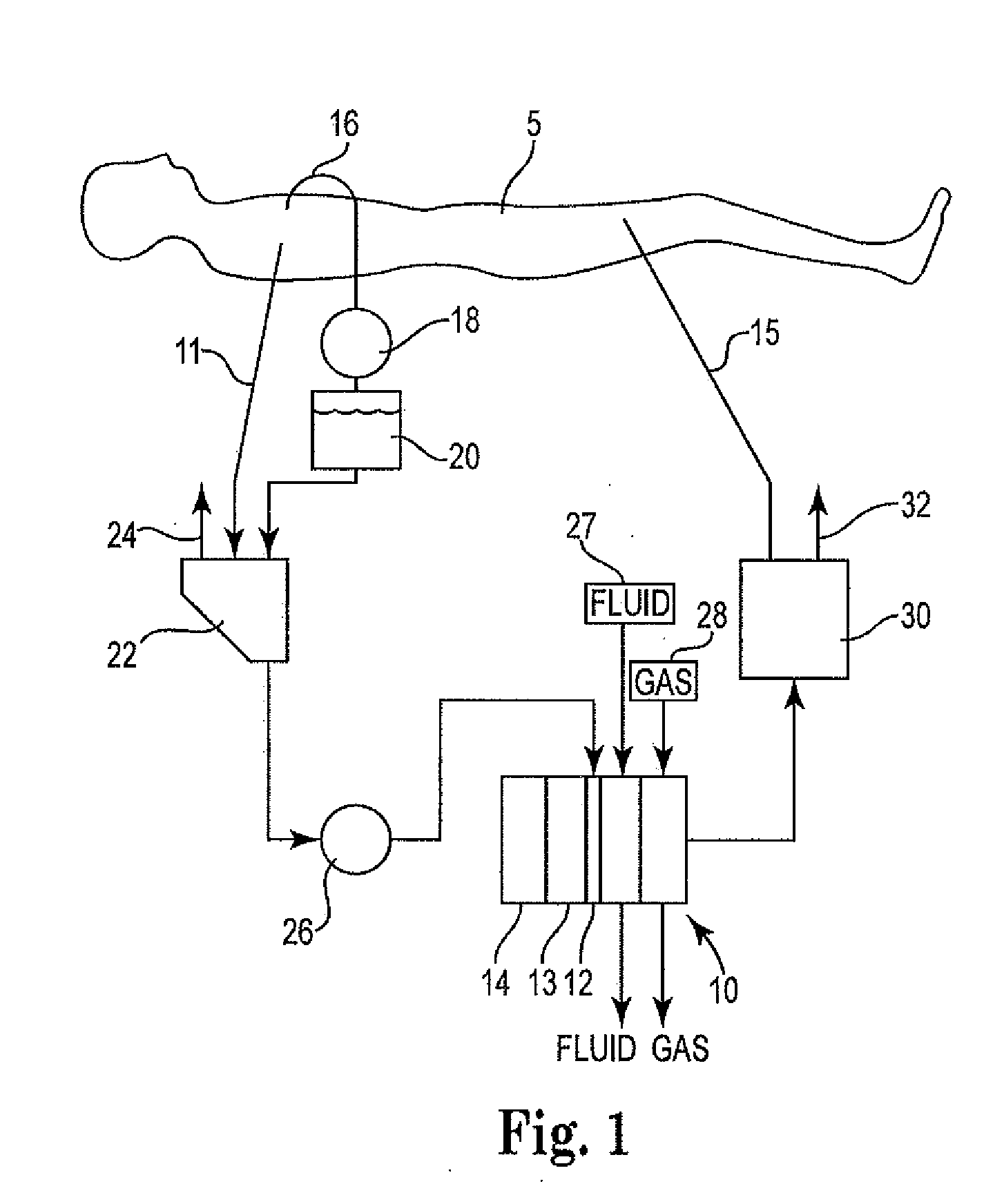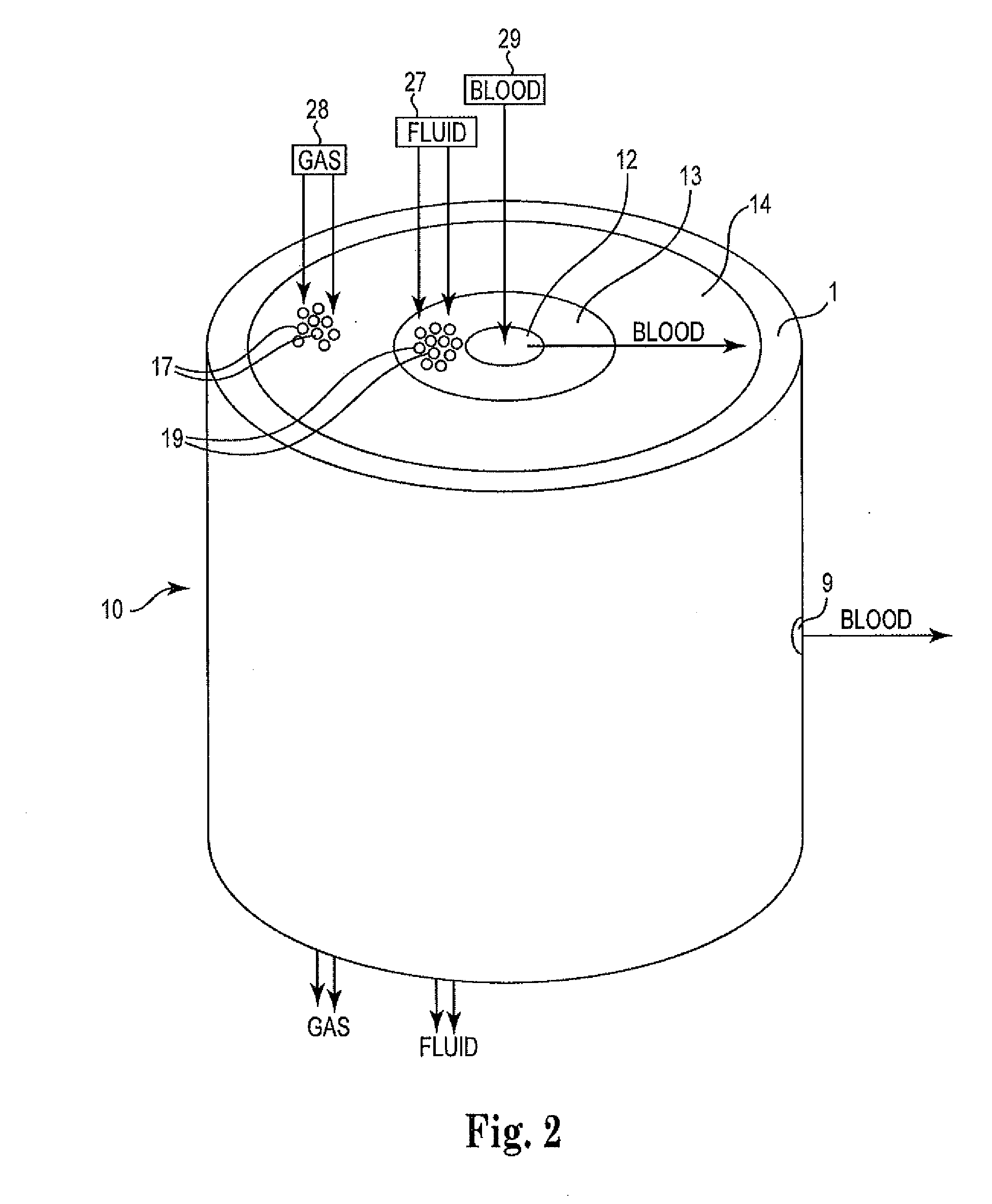Radial design oxygenator with heat exchanger
a technology of oxygenator and heat exchanger, which is applied in the direction of suction device, other blood circulation device, medical device, etc., can solve the problems of low pressure drop within the apparatus, reduce the chance of blood clots, reduce the chance of recirculation of blood or stagnant areas, and save patient us
- Summary
- Abstract
- Description
- Claims
- Application Information
AI Technical Summary
Benefits of technology
Problems solved by technology
Method used
Image
Examples
Embodiment Construction
[0047]Referring to FIG. 1, an exemplary cardiopulmonary bypass circuit is schematically illustrated, which includes an embodiment of an apparatus 10 in accordance with the invention. The circuit generally draws blood of a patient 5 during cardiovascular surgery through a venous line 11, oxygenates the blood, and returns the oxygenated blood to the patient 5 through an arterial line 15. Venous blood drawn from the patient through line 11 is discharged into a venous reservoir 22. Cardiotomy blood and surgical field debris are aspirated by a suction device 16 and are pumped by pump 18 into a cardiotomy reservoir 20. Once defoamed and filtered, the cardiotomy blood is also discharged into venous reservoir 22. Alternatively, the function of the cardiotomy reservoir 20 may be integrated into the venous reservoir 22. In the venous reservoir 22, air entrapped in the venous blood rises to the surface of the blood and is vented to the atmosphere through a purge line 24.
[0048]A pump 26 draws b...
PUM
 Login to View More
Login to View More Abstract
Description
Claims
Application Information
 Login to View More
Login to View More - R&D
- Intellectual Property
- Life Sciences
- Materials
- Tech Scout
- Unparalleled Data Quality
- Higher Quality Content
- 60% Fewer Hallucinations
Browse by: Latest US Patents, China's latest patents, Technical Efficacy Thesaurus, Application Domain, Technology Topic, Popular Technical Reports.
© 2025 PatSnap. All rights reserved.Legal|Privacy policy|Modern Slavery Act Transparency Statement|Sitemap|About US| Contact US: help@patsnap.com



